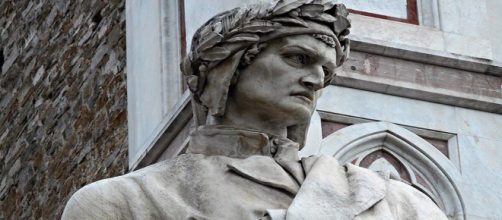Do artists and writers have to die to get attention? Consider the Italian poet Dante Alighieri, who died in exile, ostracized. Last year, 700 years after his death, his country lionized him with a national holiday called Dante Day.
Poetic justice
Dante, best known for the narrative poem Divine Comedy, lyricized an imagined afterlife both in heaven and hell. And in an oddly corresponding way, his actual afterlife is also active, full with Italy’s nation-wide homage. To explain the belated tribute, Art Daily quotes Italian president Sergio Mattarella speaking to the poet’s ongoing relevance and the “universality” of the Divine Comedy.
The poem attracts us because it’s about us, he said.
National holiday
As a government-ordered holiday, Dante Day will be observed each year on March 25, when the Divine Comedy was started in 1300. As Italy’s Culture Minister Dario Franceschini told Italy Magazine, “It will be a day to remember Dante’s genius.” The day will include students and teachers throughout the land reading his work.
As part of the celebration Roberto Benigni, Academy Award star of the 1997 film “Life is Beautiful,” recited a portion of the Divine Comedy - the 25th canto in which Dante hopes his work would “overcome the cruelty” of his banishment. Clearly, his wish came true. The headline in Italy Magazine tells the story: “Italy Establishes National Dante Day.”
Apology accepted
You might say that Italy’s reconciliation with Dante began 12 years ago when the city of Florence, his hometown, officially apologized for banishing him 700 years ago.
Unknown quantity
While never ostracized as Dante was, several artists in history were overlooked in their lifetime and lionized after death. I’m thinking of Johannes Vermeer, popularly known for his 1665 painting Girl with the Pearl Earring and his particular ability to capture light with transparent layers of color that allowed underlying shades to seep through.
The process gives life to the light.
Reference point
And talk about relevance, cinematographer Colin Watkins filmed The Handmaid’s Tale in 1990 in the way that director Reed Moran wanted – the same way Vermeer painted – with the gossamer-light in the painting Woman Reading a Letter. “Vermeer was a great reference,” Moran told the press.
In 2003, Vermeer also served as a reference for Tracy Rose Chevallier’s novel “Girl with a Pearl Earring” based on Vermeer’s painting of the same name. As well, a movie was adapted from Chevallier’s book in 2003. Scarlett Johansson played the girl in the painting.
What took so long?
Yet, throughout his lifetime, Vermeer remained unrecognized by art historians. No one heard of him outside of the city of Delft where he lived and worked, barely eking out a living painting portrait. It wasn’t until the mid-19th century when French art critic Theophile Thore-Burger noticed his work. The rest is history. But you have to wonder what took Italy so long to notice him, too.


